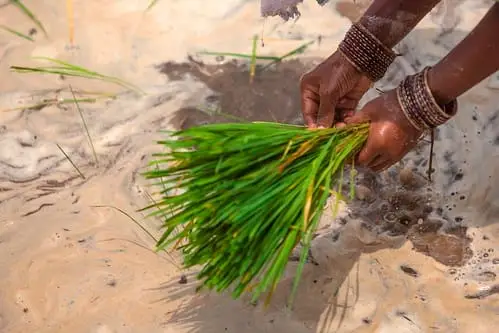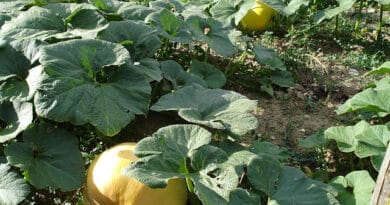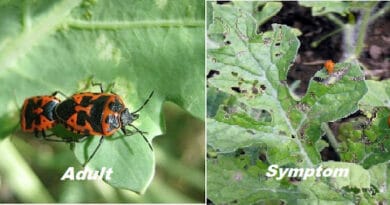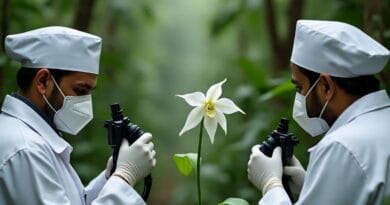Game-Changing Rice for Farmer”s ; An Upgraded Variant of Samba Mahsuri and MTU1010
Game-Changing Rice for Farmers: An Upgraded Variant of Samba Mahsuri and MTU1010
India became the first nation in the world to introduce the first genome-edited rice cultivars, DRR-100 (Kamla) and Pusa DST-1. The novel genetic variations may lead to groundbreaking improvements in water conservation, climate adaptation, and productivity.
DRR Dhan 100 (Kamala), an upgraded variant of “Samba Mahsuri,”
- The genome-edited version of “Samba Mahsuri,” created by ICAR-IIRR, Hyderabad, uses CRISPR-Cas to enhance the number of grains per panicle by targeting the CKX2 (Cytokinin Oxidase 2) gene.
- DRR Dhan 100 (Kamala) has an average yield of 53.7 q/ha and a maximum yield of 88.96 q/ha.
- Kamala outperformed Samba Mahsuri by 19% in field trials.
- DRR Dhan 100 (Kamala) withstand drought, uses less nitrogen, matures in 130 days (20 days earlier)
- DRR Dhan 100 (Kamala) conserves water, emits less methane, and enables early field availability for the following crop.
- DRR Dhan 100 (Kamala) cut greenhouse gas emissions by 20% (32,000 tonnes), encouraging farming that is climate resilient.
- DRR Dhan 100 (Kamala) has the advantage that it yields 25–30% more and can be harvested 15–20 days earlier.
- DRR Dhan 100 (Kamala) boosts productivity because each plant has between 450 and 500 extra grains in its ears.
- It takes less time, less money, and more profit are the result of this.
Pusa DST-1 Rice (upgraded variant of “MTU1010 )
- This improved type of fine-grain rice, MTU1010, has been developed by researchers at ICAR-IARI, Pusa.
- The DST-1 (drought and salt tolerance) gene was accurately modified using CRISPR-Cas technology.
- Pusa DST-1 Rice increases resilience to salinity and drought.
- In national field trials, it produced 10–30% more grain under stress while maintaining the original grain quality.
- Pusa DST-1 thrives in inland, alkaline, and coastal salinity environments and is appropriate for Kharif and Rabi.
- Pusa DST-1 is best suited to the states of Andhra Pradesh, Telangana, Karnataka, Tamil Nadu, Puducherry, Kerala, Odisha, Jharkhand, Bihar, Uttar Pradesh, West Bengal, Chhattisgarh, Maharashtra, and Madhya Pradesh
- Pusa DST-1 thrives in salty environments.
- The Pusa DST-1 cultivar will help the farmers whose land was producing less because of salinity and may now produce better crops.
These cultivars have no foreign DNA and are similar to conventionally grown varieties.
They are not subject to severe biosafety regulations under the Environment (Protection) Act of 1986 and are approved under India’s simplified regulatory framework for genome-edited crops. Cultivating them on 5 million hectares might increase paddy production by 4.5 million tonnes while reducing greenhouse gas emissions by 20% (32,000 tonnes), supporting climate-resilient farming.



